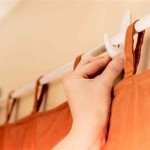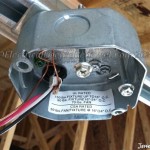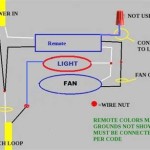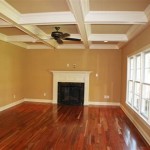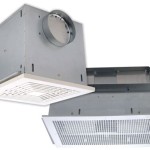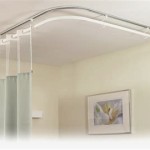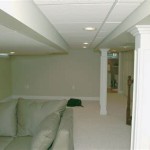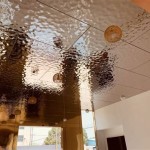How Much Does It Cost To Install Beadboard Ceiling?
Installing a beadboard ceiling can significantly enhance the aesthetic appeal of a room, adding a touch of classic charm and visual texture. However, before embarking on this project, understanding the associated costs is crucial for budgeting and decision-making. The total cost to install a beadboard ceiling can vary considerably depending on several factors, including the size of the room, the type of beadboard material, the complexity of the installation, and whether professional installation is employed.
This article provides a comprehensive overview of the factors influencing the cost of beadboard ceiling installation, enabling informed planning and budgeting. It delves into the material costs, labor expenses, and additional factors that contribute to the overall project price. By understanding these elements, homeowners can better estimate the cost of their beadboard ceiling project and make informed decisions about materials, installation methods, and professional hiring.
Material Costs: Beadboard Options and Pricing
The type of beadboard material chosen significantly impacts the overall cost. Beadboard panels are available in various materials, each with different price points and characteristics. The most common options include wood, medium-density fiberboard (MDF), and PVC.
Wood beadboard is typically the most expensive option due to its natural beauty and durability. Solid wood beadboard offers a premium aesthetic and can be stained or painted to match any decor. However, it is also susceptible to moisture damage and requires careful sealing and maintenance in humid environments. The cost of wood beadboard can range from $4 to $10 per square foot, depending on the wood species and finish.
MDF beadboard is a more affordable alternative to solid wood. It is manufactured from compressed wood fibers and resins, creating a smooth, uniform surface ideal for painting. MDF is less prone to warping or cracking than solid wood but is also susceptible to moisture damage. It is essential to properly prime and paint MDF beadboard to protect it from moisture in areas with high humidity or potential water exposure. The cost of MDF beadboard typically ranges from $2 to $6 per square foot.
PVC beadboard is a synthetic option that offers excellent moisture resistance, making it suitable for bathrooms, kitchens, and other areas prone to humidity. PVC beadboard is also lightweight and easy to install, making it a popular choice for DIY projects. While PVC beadboard may lack the natural look of wood, it is available in a variety of colors and textures. The cost of PVC beadboard generally ranges from $3 to $7 per square foot.
Beyond the beadboard panels themselves, additional materials will contribute to the overall cost. These include: adhesive or nails for securing the beadboard, trim or molding to conceal edges and seams, primer and paint (if required), caulk to seal gaps, and necessary tools such as a saw, measuring tape, level, and safety glasses.
Labor Costs: DIY vs. Professional Installation
The decision to install the beadboard ceiling as a DIY project or hire a professional installer will have a significant impact on the overall cost. DIY installation can save on labor costs, but it requires time, effort, and a certain level of carpentry skill. Professional installation ensures a high-quality finish and minimizes the risk of errors, but it comes at a higher price.
If opting for DIY installation, the primary cost will be the materials. However, it is crucial to factor in the time required to complete the project, as well as the cost of any tools that may need to be purchased or rented. DIY installation is generally suitable for homeowners with experience in carpentry and a good understanding of home improvement projects. However, for complex installations or for those lacking experience, professional installation may be a more prudent choice.
Professional installation costs can vary depending on the location, the complexity of the project, and the experience of the installer. Labor costs typically range from $2 to $8 per square foot. Factors that can increase labor costs include: the height of the ceiling, the presence of obstacles such as light fixtures or ductwork, and the need for extensive preparation work, such as removing existing ceilings or repairing damaged surfaces.
When hiring a professional installer, it is advisable to obtain multiple quotes from different contractors and carefully review their experience, qualifications, and references. Ensure that the quote includes all aspects of the project, including material costs, labor expenses, and any potential additional charges. A written contract is also essential to protect both the homeowner and the contractor.
Additional Cost Factors: Room Size, Complexity, and Preparation
Beyond the material and labor costs, several other factors can influence the overall price of a beadboard ceiling installation. These include the size of the room, the complexity of the installation, and the amount of preparation work required.
The size of the room is a direct determinant of the amount of material needed and the labor hours required. Larger rooms naturally require more beadboard panels and more time to install, leading to higher overall costs. It is essential to accurately measure the ceiling area to determine the necessary amount of material and to obtain accurate quotes from contractors.
The complexity of the installation can also significantly impact the cost. Ceilings with irregular shapes, angles, or multiple levels will require more cutting, fitting, and intricate work, increasing both material waste and labor time. The presence of obstacles such as light fixtures, ceiling fans, or ductwork will also add to the complexity of the installation, as the beadboard panels need to be carefully cut and fitted around these obstructions.
The amount of preparation work required can also affect the overall cost. If the existing ceiling is damaged, uneven, or has existing finishes that need to be removed, additional preparation work will be necessary. This may include repairing cracks, patching holes, sanding surfaces, or removing old paint or wallpaper. Any necessary preparation work will add to the overall cost of the project, both in terms of materials and labor.
Furthermore, consider the cost of disposal for any existing ceiling materials. If removing an old ceiling, the cost of disposing of the debris should be factored into the budget. Some contractors may include disposal fees in their quotes, while others may charge separately.
Finally, consider the cost of finishing touches, such as painting, caulking, and installing trim or molding. These details can significantly enhance the appearance of the beadboard ceiling but will also add to the overall cost. It is essential to factor in the cost of these finishing touches when budgeting for the project.
In summary, the cost to install a beadboard ceiling is influenced by a combination of material expenses, labor costs, room size and complexity, and the extent of preparation work needed. Careful planning and budgeting are essential to ensure that the project stays within budget and achieves the desired aesthetic outcome. By understanding these cost factors, homeowners can make informed decisions about materials, installation methods, and professional hiring to achieve a beautiful and cost-effective beadboard ceiling.
Before initiating the project, research local building codes and regulations. Some areas may have specific requirements for ceiling installations, particularly in older homes. Obtaining the necessary permits, if required, is crucial to avoid potential fines or setbacks during the project.
When selecting beadboard materials, consider the long-term maintenance requirements. Wood beadboard may require periodic sealing or staining to protect it from moisture, while MDF beadboard may need to be repainted over time. PVC beadboard is generally low-maintenance but may be more susceptible to fading or discoloration in direct sunlight. Choosing materials that are durable and easy to maintain can help minimize long-term costs and ensure that the beadboard ceiling retains its beauty for years to come.
Consider energy efficiency when installing a beadboard ceiling. Proper insulation above the ceiling can help reduce energy consumption and lower utility bills. If the existing insulation is inadequate or damaged, consider adding new insulation before installing the beadboard panels. This can significantly improve the energy efficiency of the room and reduce heating and cooling costs.
Think about the lighting. The installation of beadboard may require adjustments to existing lighting fixtures or the addition of new lighting. Consider the placement of recessed lighting, pendant lights, or chandeliers to complement the beadboard ceiling and enhance the overall ambiance of the room. The cost of electrical work associated with lighting adjustments should be factored into the overall project budget.
Always prioritize safety during the installation process. Wear appropriate safety gear, such as safety glasses, gloves, and a dust mask. If working at heights, use a sturdy ladder or scaffolding and ensure that it is properly secured. If unsure about any aspect of the installation, consult with a professional contractor or electrician.

How Much Does It Cost To Install A Beadboard Ceiling 2024 Data Angi

Diy Beadboard Ceiling Tutorial Easy And Inexpensive Custom Treatment

How To Install Beadboard Panels On A Ceiling And Why We Ll Never Do It Again The Lake Land

Beadboard Ceiling What It Is And How To Install Yourself

How To Install Beadboard Panels On A Ceiling And Why We Ll Never Do It Again The Lake Land

Beadboard Ceiling Emergence Inspires Home Design Renaissance

How To Install A Wood Plank Ceiling Young House Love

Beadboard Ceilings 101 All You Need To Know Bob Vila

How To Install Beadboard Panels On A Ceiling And Why We Ll Never Do It Again The Lake Land

Diy Beadboard Ceiling Tutorial Easy And Inexpensive Custom Treatment
Related Posts

